Lockdown day in the life … Senior Illustrator
- 21st June 2020
So how does our highly skilled illustrator more used to using an array of technology (light-box for back-illuminating objects, images, x-rays, etc.) do the same work at home?
As part of an archaeological report, amongst all the other detailed records collected are photographs and sketches of objects as they were found in place. So, what starts as a sketch of a find buried in mud and, in this case clay, will be clearly represented in the final report without unrelated things around it and how the different parts might be more clearly shown.
What are we working on?
Do you recall the story of “The Sword in Clay” from 2017? Work on this remarkable find is being presented in a report and our senior illustrator has been tasked with presenting it in detail, together with finds from other sites (e.g. an exceptionally rare bowl), for publication.
How can she do this from home?
Not exactly the equipped studio she is used to but with the now usual “thinking out of the box” ingenuity achieves it.
The sword in the clay
From the original article you can see how it was found …a rusty lump of sword-shaped iron buried in clay and carefully excavated by the team as you can see from this video (why not subscribe to our YouTube channel?)
The sword was found in a fairly sterile ring ditch – ‘fairly sterile’ meaning that there was next to no other material culture found in the ditch. The site was heavy clay, hence the blog title ‘The Sword in Clay’.
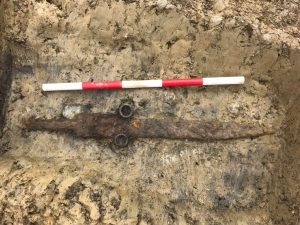
So how do we find more about its composition and fabrication especially through the rust? The answer is X-rays.
“X-rays can arrive on film or digitally. It’s great to be able to include them in our finds reports to add as much information as possible”
We got the X-ray images back from the laboratory on film and now we must use these to produce report-detailed images and from home that is not easy. What Laura did was ingenious …a windowed door.
“When I moved out of the Hive, bringing the light box back to my home wasn’t a priority. However, with a useful coal chute door in my ‘office’ (a converted coal cellar) the light box effect could be recreated”
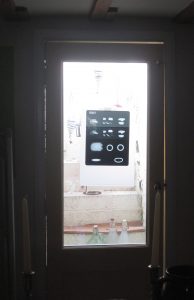
With the comparatively darkened room, the light from outside was enough to see the details shown up in the film.
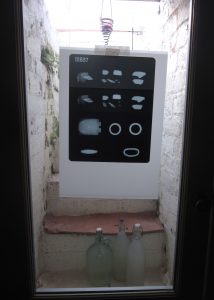
X-rays of specific parts of this otherwise lump of rusty iron were requested and as you can see, the details in the resultant slide is highly illuminating (pardon the pun).
(By the way …the bottles in the background are homemade Elderflower Champagne, 2019 vintage, so yet another of Laura’s talent is revealed).
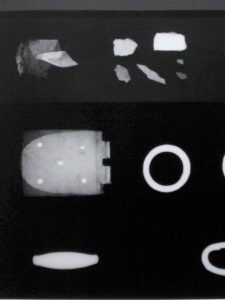
Why use X-rays – won’t detailed photographs do?
Not in this case …
“With many items we would scan images in order to create digital versions, but X-rays have such a subtle range of greys that our scanners can’t reproduce them. So, we pop the film onto a light box and photograph them. Digital cameras being much lighter sensitive than desk top scanners”
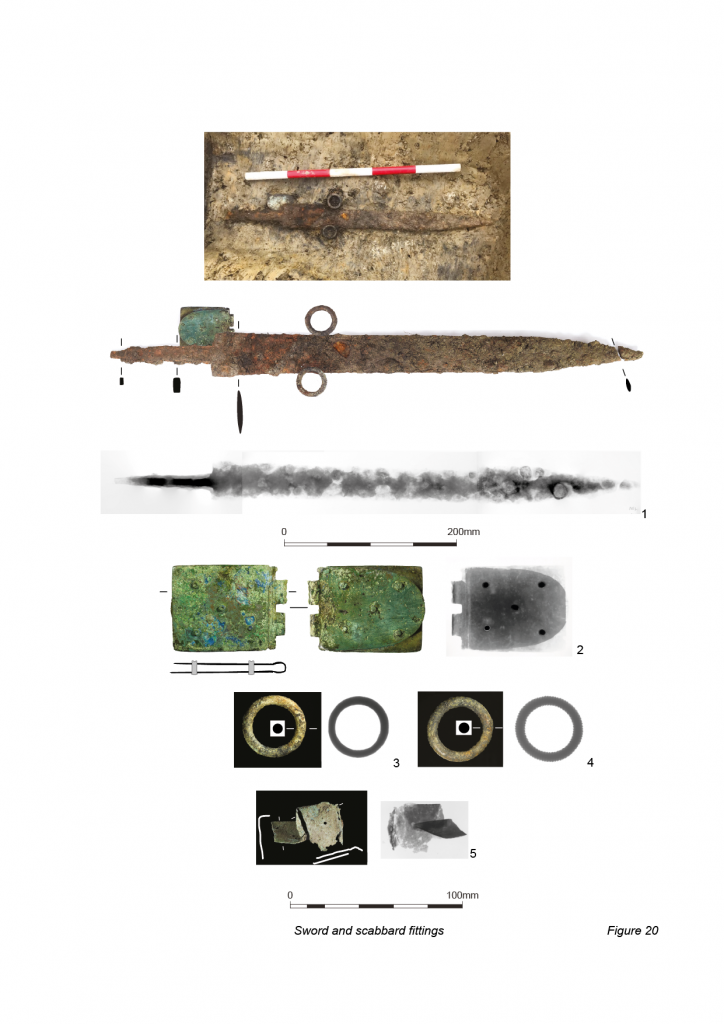
From the images Laura produced, we can see that from the rusty iron lump carefully extracted from a clay ditch, we know how it was made in one piece with cross-sections showing how the skilled sword makers created the different profiles needed to construct the final weapon. We can see details of how it was attached to the scabbard and how it was made to be practical and portable.
Extracting information from exceptionally rare, important or fragile items
Although not done at home (yet), an example of the work Laura does to extract information from an ancient object is demonstrated here where she is using RTI (Reflectance Transformation Imaging) to help visualise an object as it would have been seen.
What is RTI?
RTI is a computational photographic method that captures a subject’s surface shape and colour and enables the interactive re-lighting of the subject from any direction so gives us the ability to visualise a complete object (even if photographed in fragments) and a clearer idea of inscriptions, decorations and even colours.
Set it up and shoot
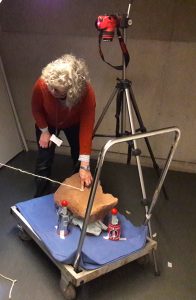 |
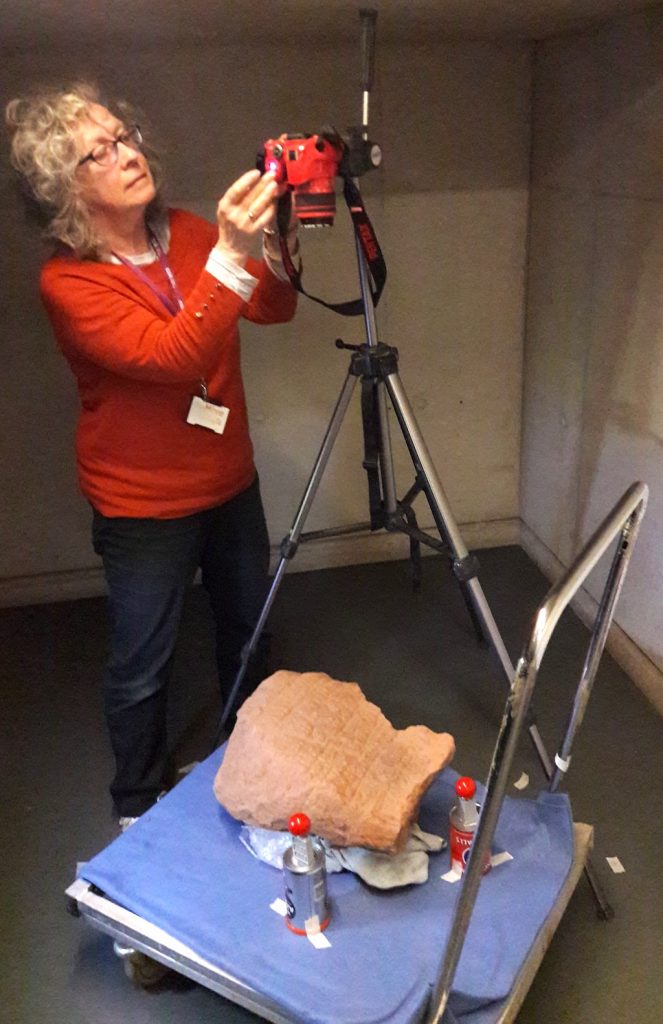 |
The technique involves taking a series of photographs of an object with a single strong light source from one direction with two fixed markers for reference (i.e. the two red balls), then moving the light source or object and taking more photographs so details are revealed from different angles.
It is like standing and taking a series of photographs of a sunrise over a landscape and seeing different details in the landscape revealed as the sun moves.
The two great benefits of this technique are that it is non-intrusive i.e. the item is not touched during the process, and the best of detail can be taken from one or more of the series of photographs.
We are really lucky to have Laura, a senior illustrator with years of experience, knowledge and instinct, who uses a combination of technologies and techniques that enables her to reveal the hidden details of design, construction and practical use of a Roman sword (from her own home) or a worn and exceptionally rare item and who provides the report a massive amount of information that could not be identified any other way.
For other examples of Laura’s work please see https://www.explorethepast.co.uk/2019/08/illustrating-archaeological-finds/.
Post a Comment